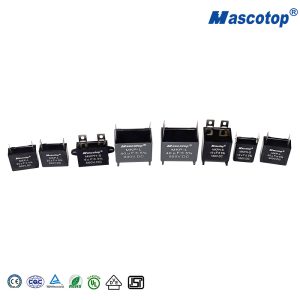
Capacitors are electrical components that store energy in an electric field. They are widely used in electronic devices and systems, ranging from simple circuits to complex devices like computers and automobiles. In recent years, there have been significant advancements in capacitor technology, resulting in new types of capacitors that offer improved performance, higher energy storage capacity, and greater reliability.

Table of Contents
ToggleBefore discussing the latest advancements in capacitor technology, it is essential to understand the basics of capacitor operation. Capacitors consist of two conductive plates separated by an insulating material or dielectric. When a voltage is applied across the plates, the insulating material becomes polarized, creating an electric field between the plates. The amount of energy stored in a capacitor is proportional to the voltage applied and the capacitance of the device, which is a measure of the capacity to store charge. Capacitors are used in electronic circuits for filtering, timing, and energy storage.
One of the latest advancements in capacitor technology is the development of solid-state capacitors. Traditional capacitors have a liquid or gel electrolyte that can leak or dry out over time, leading to performance degradation or failure. Solid-state capacitors use a solid electrolyte, which improves their reliability and extends their lifespan. They also offer higher energy storage capacity and faster charging times compared to traditional capacitors. Solid-state capacitors are being used in a wide range of applications, including electric vehicles, renewable energy systems, and aerospace.
Supercapacitors, also known as ultracapacitors, are another significant advancement in capacitor technology. They offer much higher energy storage capacity than traditional capacitors, making them suitable for applications that require quick bursts of power, such as regenerative braking in electric vehicles or power backup in data centers. Supercapacitors also have a longer lifespan and better temperature tolerance than traditional capacitors, making them more reliable in harsh environments. Some researchers are even exploring the use of supercapacitors as a potential replacement for batteries in some applications.
Nanocapacitors are another emerging technology in the field of capacitors. They are small-sized capacitors with capacitance on the order of a few picofarads or less. The use of nanoscale materials and fabrication techniques allows for the creation of these small capacitors with high energy storage capacity. Nanocapacitors have the potential to be used in applications such as portable electronics, medical devices, and implantable sensors.
Traditional capacitors have limitations in high-temperature environments, which can lead to performance degradation or failure. High-temperature capacitors are a new type of capacitor that can operate at temperatures up to 200°C or more. They are being developed for use in aerospace, oil and gas, and automotive industries, where high-temperature environments are common. High-temperature capacitors use materials such as ceramic, tantalum, and other refractory metals, which have high melting points and good stability at high temperatures.
Conclusion
In conclusion, the latest advancements in capacitor technology are pushing the boundaries of what is possible with these essential electronic components. Solid-state capacitors offer improved reliability and higher energy storage capacity, while supercapacitors provide even more energy storage and faster charging times. Nanocapacitors are emerging as a new type of small-sized capacitor, and high-temperature capacitors are being developed for use in harsh environments. These advancements in capacitor technology have the potential to impact a wide range of industries.